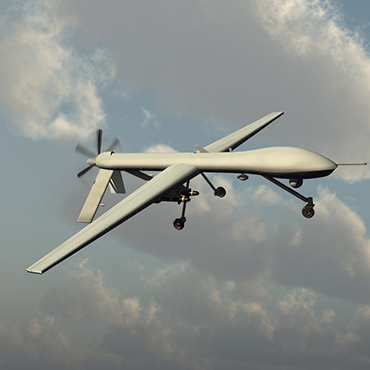Navy drones, an innovation festival and predicting the grid

News and notes from around the federal IT community.

The Navy is consolidating its drone resources under a new office to better coordinate the use of unmanned systems.
Navy looking for bigger picture on drones
With the help of a new office and deputy assistant secretary, the Navy is starting to think more holistically about unmanned systems, said Vice Adm. Joseph Aucoin, deputy chief of naval operations for warfare systems.
"All the money in the world can't solve some of the issues that we need to address," he said Aug. 5 at a Center for Strategic and International Studies event in Washington. "We need innovative thinking. We need to have the right balance between manned and unmanned" systems.
In April, Secretary of the Navy Ray Mabus announced the creation of a new position -- deputy assistant secretary of the Navy for unmanned systems -- and a new office, known as N-99, that will coordinate drone resources.
Aucoin said the office will "take all the stakeholders, all the operators in the unmanned world and all domains, and put them under one hat so we that we can develop better synergy."
Piranhas, hoverboards and Watson
Oak Ridge National Laboratory's Piranha text-analysis technology will be showcased alongside other pioneering inventions -- including the first functioning hoverboard and IBM's Watson supercomputer system -- during an Innovation Festival set for Sept. 26 and 27 in Washington. The Smithsonian is sponsoring the festival in collaboration with the U.S. Patent and Trademark Office.
Oak Ridge officials said Piranha finds connections in documents that might be difficult or impossible for human analysts to identify. The lab developed the tool in 2007.
A panel of experts chose to include Piranha in the festival along with innovative technology from a dozen companies, universities, government agencies and independent inventors.
New PNNL energy forecasting tool outperforms other models
A tool developed by the Pacific Northwest National Laboratory is as much as 50 percent more accurate than the tools utility companies typically use to forecast demand, and it could help save millions in energy costs.
Accurately forecasting electricity needs is a tricky business for power companies because sudden weather changes and other variables can influence projections minute by minute. But miscalculations can have dire consequences, including blackouts and high costs.
The lab's Power Model Integrator and five other forecasting models processed a year's worth of historical power system data, and the lab's tool came out on top, according to a paper lab officials presented last month during the IEEE Power and Energy Society general meeting in Denver.
NEXT STORY: IGs: Administration stymies access





